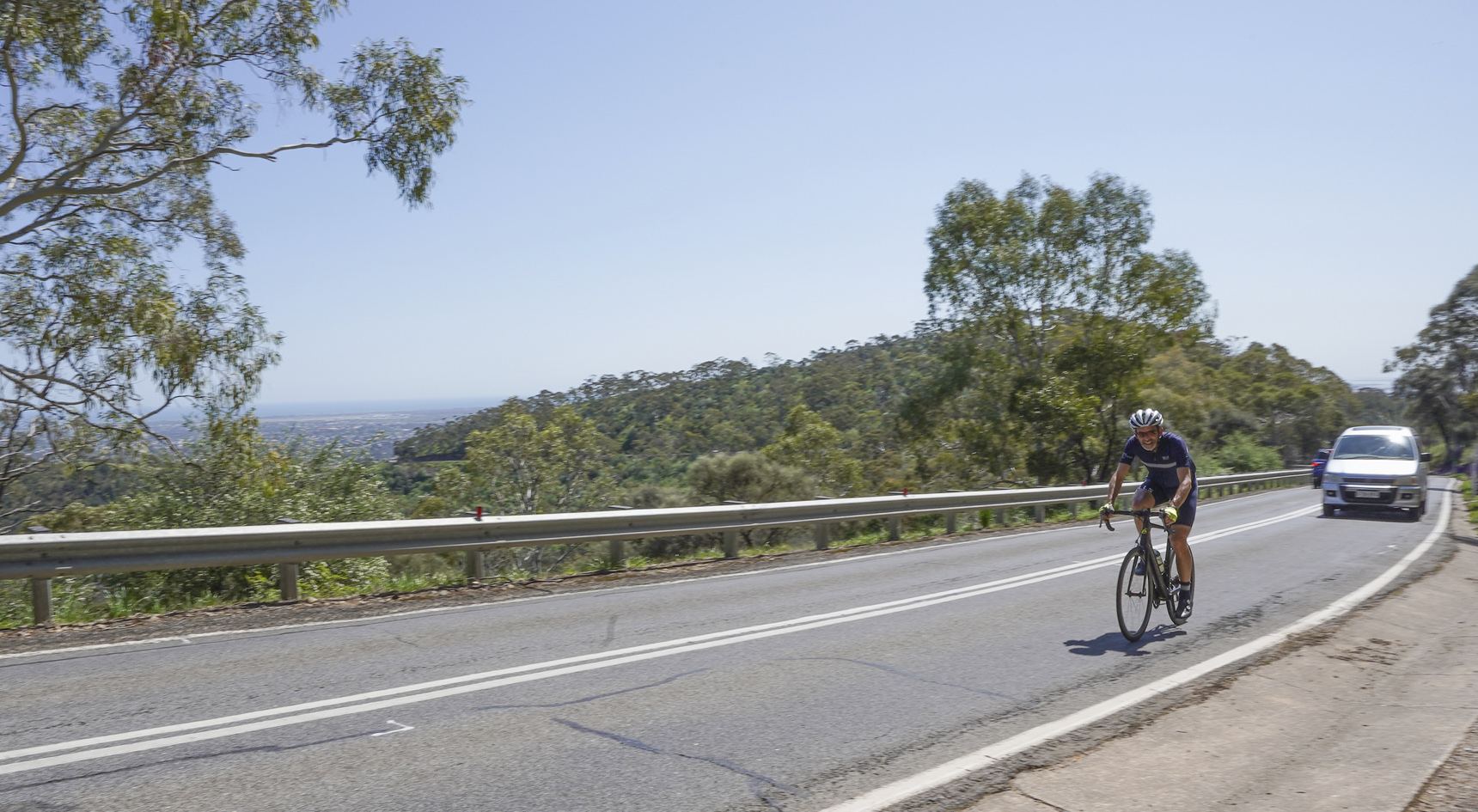Keeping cyclists safe in the Adelaide Hills
 More than 75% of Adelaide Hills residents believe the region’s roads are dangerous for cyclists, a recent RAA survey revealed.
Following an extensive assessment of the Adelaide Hills roads network, RAA is recommending a number of improvements to roads in the region including improved cycling infrastructure along with active warning systems to improve safety at intersections
Removing roadside hazards, creating new Park ‘n’ Ride facilities and building barriers to separate traffic on high crash-rate roads are among other key recommendations based on a recent survey of more than 600 Hills residents and RAA’s own assessment of roads and intersections.
The Adelaide Hills is home to thousands of residents and is popular among holiday-makers and day-trippers.
More than 75% of Adelaide Hills residents believe the region’s roads are dangerous for cyclists, a recent RAA survey revealed.
Following an extensive assessment of the Adelaide Hills roads network, RAA is recommending a number of improvements to roads in the region including improved cycling infrastructure along with active warning systems to improve safety at intersections
Removing roadside hazards, creating new Park ‘n’ Ride facilities and building barriers to separate traffic on high crash-rate roads are among other key recommendations based on a recent survey of more than 600 Hills residents and RAA’s own assessment of roads and intersections.
The Adelaide Hills is home to thousands of residents and is popular among holiday-makers and day-trippers.

New infrastructure would improve safety for cyclists in the Hills. Image: RAA
“RAA is urging governments to provide funding to extend the bikeway from Birdwood to Mt Pleasant and from Balhannah to Hahndorf to create a continuous north-south cycle route.”Respondents also had concerns about road maintenance in the Adelaide Hills. RAA believes this could be fixed through rehabilitation works on Onkaparinga Valley Rd, Lobethal Rd, North East Rd and Gorge Rd. RAA’s report, based on findings from the survey and site investigations, identified infrastructure investments across the region to increase road safety. The report recommends the increased use of rural junction active warning system (RJAWS). The technology detects vehicles approaching intersections from side roads and automatically lowers the speed limit on the through road to provide a safer gap for entering vehicles. Mr Mountain also said the use of audio tactile centreline markings to encourage motorcyclists to corner more safely should be expanded. These provide audible feedback to drivers and riders that they are drifting over the centreline. “Since [centreline markings] were introduced on Gorge Rd last year, we’ve seen far fewer motorcycle crashes,” Mr Mountain said. The Department for Transport has responded to the RAA report confirming that some of the recommended priorities are already under investigation which is welcome news for both visitors and residents.

